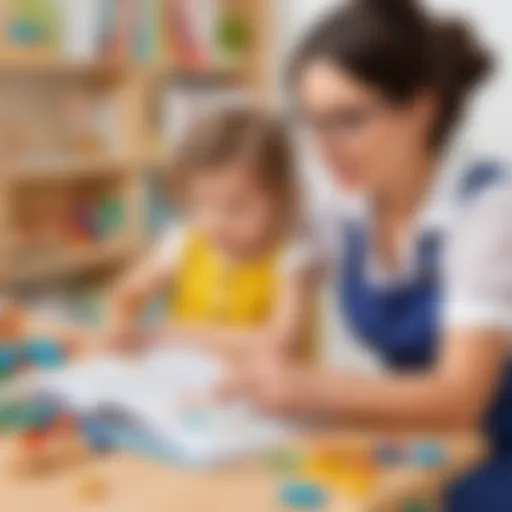Writing Activities for Second Graders: Boosting Literacy
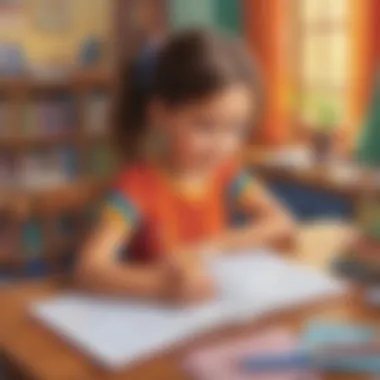

Intro
Engaging second graders in writing is crucial for their literacy development. By incorporating fun and educational activities into their learning processes, children can enhance their writing skills while also enjoying the journey. This article explores various techniques and exercises specifically designed for second graders, focusing on how these activities can foster a love for writing. The goal is to equip educators and parents with methods that not only improve writing abilities but also motivate young learners through interactive and creative tasks.
Interactive Learning Games
Learning games can transform writing practice into an enjoyable experience for second graders. These games not only engage children’s attention but also promote cognitive growth and skill development.
Popular Games
Games like Scrabble, Boggle, and Word Search are well-known among educators. They encourage students to think critically about words and their spellings. Each game offers a fun way to explore vocabulary and sentence structure.
Description of top educational games
- Scrabble: This classic word game allows players to create words on a board using letter tiles. It encourages vocabulary building and strategic thinking.
- Boggle: Players find words by connecting letters in a grid. This game enhances spelling skills and promotes quick thinking.
- Word Search: This puzzle challenges students to find words hidden within a grid. It familiarizes them with new vocabulary in an enjoyable format.
Benefits of playing educational games for kids' cognitive development
Educational games stimulate multiple aspects of cognitive development, including:
- Critical thinking: Players must strategize and decide on the best words.
- Problem solving: Games often involve overcoming challenges or restrictions.
- Memory skills: Remembering spellings and word definitions improves recall.
Game Reviews
Each game has unique features that contribute to learning.
- Scrabble: It encourages collaboration and communication among players. This is beneficial for enhancing social skills.
- Boggle: Fast-paced play motivates children to think quickly, which enhances confidence.
- Word Search: The satisfaction of completing the puzzle can boost a child's self-esteem.
Comparison of gameplay and learning outcomes
In comparing these games, it is clear that while each serves a unique function, they all foster a greater love for words and literacy. Scrabble provides a more structured approach while Boggle’s dynamic nature creates excitement. Word Search serves as a relaxing way to engage with vocabulary.
Educational Topics
Encouraging children to write requires a well-rounded approach across various subjects.
Compilation of articles covering various subjects like math, science, languages, etc.
Integrating topics from different disciplines helps children connect ideas. This can lead to deeper understanding and more engaging writing activities. For example, writing about scientific experiments allows kids to practice both literacy and scientific reasoning.
Importance of interdisciplinary learning for holistic development
Interdisciplinary learning enriches children's educational experience. By connecting subjects, students can see the relevance of writing in everyday life. They may write a story based on a math problem or a poem about their science project. This approach strengthens their understanding.
Tips and Tricks
Providing children with practical tools can greatly enhance their writing skills.
Practical tips for parents and educators to enhance children's learning journey
- Set aside dedicated writing time. Consistency is key.
- Provide prompts or questions to stimulate ideas. Simple starters can spark creativity.
- Encourage sharing. Kids can read their writing to family or classmates for feedback and confidence.
Strategies for making learning fun and engaging
- Incorporate technology such as educational apps or online games. Kids love screens and learning through them can be effective.
- Use real-world connections. Encourage students to write about their experiences, which makes learning relatable.
Creative DIY Projects
Hands-on activities can enrich children's learning in remarkable ways.
Step-by-Step Guides
Creating DIY projects encourages creativity alongside writing skills. For example, making a scrapbook or a personal journal can lead to rich writing opportunities.
Benefits of hands-on activities for children's cognitive and motor skills
Such engagements stimulate brain development, foster fine motor skills, and promote problem-solving abilities. This holistic approach to education supports their growth as writers and thinkers.
Craft Ideas
Using simple household items, kids can explore their creativity. Ideas include:
- Paper Mache Projects: These allow for artistic expression and can also include writing stories related to their creations.
- Collage Making: Children can create collages that reflect their thoughts or feelings, providing a context for writing.
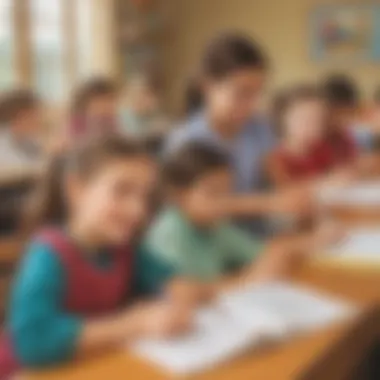

Importance of artistic expression in children's development
Artistic activities not only boost creativity but also help children articulate their emotions and thoughts through writing. This can be especially helpful for those who struggle with traditional writing formats.
Engaging in creative projects leads to developing both writing and critical thinking skills in children.
Understanding the Writing Development of Second Graders
Understanding how second graders develop their writing skills is fundamental to enhancing literacy in this age group. During this stage, children exhibit remarkable growth in their cognitive and language abilities. This understanding allows educators and parents to tailor writing activities that are engaging and appropriate for their learning needs. It also assists in identifying specific challenges that children may face, paving the way for targeted support and encouragement.
Consideration of cognitive and emotional development is crucial. Writing activities should not only focus on technical skills but also on fostering a positive attitude towards writing. Engaging them in fun, relatable tasks can stimulate their imaginations and improve their overall literacy.
Cognitive and Language Development
At this age, children are refining their cognitive and language skills. Many second graders can understand and use more complex sentence structures and vocabulary. This development is vital for their writing proficiency. At this stage, they transition from using simple, straightforward phrases to combining thoughts and ideas into more structured sentences.
Moreover, their comprehension skills improve, enabling them to interpret stories, instructions, and prompts better. Engaging in varied writing activities helps them practice and apply their language skills. Activities such as journaling, storytelling, and descriptive writing lay a robust foundation for their future educational experiences.
Parents and teachers should encourage children to express their thoughts and experiences through writing. This can be done by leveraging their interests. For example, if a child loves animals, prompts related to their favorite pets or wildlife can inspire creativity and expressive language use.
Milestones in Writing Proficiency
By the end of second grade, students typically achieve specific writing milestones. They generally can write coherent narratives with a clear beginning, middle, and end. They start to understand the importance of organization and can structure their ideas logically. Second graders actively utilize punctuation, capitalization, and spacing, which are essential skills in writing.
The following are key milestones observed in second graders' writing:
- Coherency: Stories or passages demonstrate a clear understanding of structure, making sense from starting to end.
- Sentence Variety: Children begin to use a mix of simple and compound sentences, showing growth in their writing complexity.
- Word Choice: A noticeable increase in vocabulary and expression occurs, with kids using more descriptive and precise words.
- Spelling: Common words often are spelled correctly, although this may vary among individuals.
In summary, understanding cognitive and language development, along with the milestones in writing proficiency, equips educators and parents to cultivate effective writing practices in second graders. Such insight lays the groundwork for activities that not only enhance literacy but also nurture a lifelong interest in writing.
Importance of Writing in Early Education
Writing is more than just putting words on paper. For second graders, it represents a crucial aspect of their overall educational journey. At this stage, children are beginning to develop their unique voices and understand how to convey their thoughts through written language. Writing influences not only their academic success but also their social and emotional development.
Foundational Skills
During second grade, students build upon their writing skills learned in earlier grades. They employ grammar, punctuation, and structure more confidently. Teaching writing at this stage lays down foundational skills that are essential for future educational success. Children start to understand the function of sentences and paragraphs, which is vital for effective communication.
Some key components of foundational skills include:
- Handwriting: Developing legible handwriting helps children express themselves without the barrier of unclear writing.
- Editing: Learning how to revise their work teaches students that writing is a process, not a one-time task.
- Spelling: Correct spelling enhances readability and boosts kids' confidence in their writing abilities.
By focusing on these elements, educators can foster an environment that encourages second graders to explore writing more freely.
Critical Thinking and Expression
Writing is also a tool for critical thinking. When second graders compose their thoughts, they examine and organize their ideas more clearly. They learn to express opinions and provide rationale, which contributes to their overall analytical skills.
Critical thinking can be nurtured through various writing activities that promote creativity and analysis. For example:
- Personal reflections: Encourage kids to write about their day or experiences. They learn to introspect and articulate their feelings.
- Story prompts: Introduce them to unexpected scenarios that require them to think outside the box and create narratives.
Additionally, writing serves as a form of self-expression. Children begin to see writing as a way to share their perspectives, thoughts, and ideas with others. Thus, fostering their emotional and social growth.
Writing allows children to develop their voices. They learn that their viewpoints are valid and worthy of expression.
In summary, the importance of writing in early education cannot be overstated. It forms the foundation for both academic and personal growth, preparing second graders for future challenges in life and learning.
Types of Writing Activities
Writing activities are essential in developing literacy skills among second graders. They foster creativity, enable expression, and improve fundamental writing techniques. These activities allow children to explore various writing styles while simultaneously enhancing their comprehension and critical thinking. When engaging in writing exercises, it's important to consider the developmental stage of the child. Activities should be both challenging and achievable to maintain motivation and interest.
Creative Writing Exercises
Creative writing exercises offer second graders the opportunity to unleash their imagination. These activities can include prompts that encourage students to invent their own stories or character descriptions. For instance, a prompt could ask children to write about a magical creature they would meet in a dream. This not only aids in language development but also helps with flexible thinking.
Benefits of Creative Writing Exercises:
- Encourages imaginative thought: Children learn to think outside the box while formulating narratives.
- Enhances vocabulary: As young writers create stories, they often explore new words and phrases.
- Builds confidence: Publishing or sharing their unique pieces helps build self-esteem.
Descriptive Writing Tasks
Descriptive writing tasks compel young learners to observe and articulate details. When tasked with describing their favorite place or a cherished object, students must focus on sensory details. This enhances their ability to convey a vivid picture using words. It is crucial for children to understand how to express information precisely and engagingly.
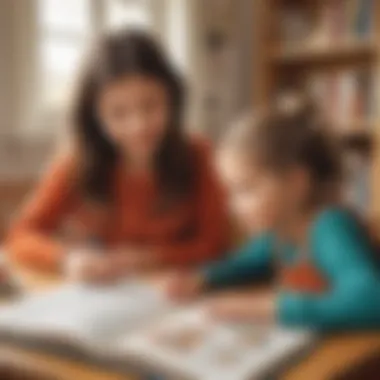

Considerations for Descriptive Writing Tasks:
- Use of sensory language: Encourage the use of sight, sound, touch, taste, and smell in descriptions.
- Clear structuring: Teach children how to organize their thoughts logically, leading the reader through the description.
- Peer editing: Pair students to share their work for constructive feedback, promoting collaboration.
Narrative Writing Prompts
Narrative writing prompts help second graders to develop storytelling skills. These prompts can range from personal experiences to fictional tales. For example, a prompt might suggest writing about an adventure they would like to take. Narrative writing not only hones a child’s ability to engage readers but also nurtures a connection with their own experiences.
Importance of Narrative Writing:
- Cultivates storytelling ability: Children learn to build plots and develop characters.
- Enhances empathy: Writing about experiences can help children understand others' emotions and viewpoints.
- Improves sequencing: It teaches students the importance of order in events, developing logical thinking.
Expository Writing Projects
Expository writing projects are beneficial for teaching young learners how to present facts and information clearly. For second graders, this can involve writing simple reports on topics of interest, such as animals or planets. This type of writing emphasizes clarity and factual information over opinion.
Elements of Successful Expository Writing Projects:
- Research skills: Introduce basic research, teaching children how to gather relevant information.
- Structure: A clear outline is vital, usually consisting of an introduction, body, and conclusion.
- Illustrations: Encourage using diagrams or drawings to complement the text, reinforcing comprehension.
Writing activities provide students the chance to not only express their thoughts but also engage with the world around them. As they explore various types of writing, they are building a foundation for future academic success.
Engaging Activities for Writing Enhancement
Engaging activities play a crucial role in advancing writing skills in second graders. At this stage of education, children benefit greatly from hands-on exercises that stimulate their creativity and promote literacy. Incorporating a range of activities helps children to express themselves, communicate ideas, and develop other essential skills like spelling and grammar. Thus, it is vital for educators and parents alike to provide a variety of engaging writing tasks that capture children’s interest and foster a love for writing.
Story Cubes for Creativity
Story cubes offer a fun, interactive way to drive creativity in writing. These cubes are typically six-sided dice with images or words on each face. When rolled, they inspire children to create stories based on the symbols that land face up. This visual prompt encourages imagination and helps structure their narratives. It is an effective method to overcome writer's block, as children feel energized by the random nature of the prompts.
- Benefits:
- Stimulates Imagination: Children think outside of the box and connect unrelated images, making unique storylines.
- Flexible Usage: Story cubes can be adapted to fit different genres, such as fantasy or adventure, making them suitable for various writing assignments.
Writing Letters to Authors
Letter writing to authors engages students in a personal and meaningful way as they become active participants in the world of literature. This activity encourages second graders to express their thoughts about a book or an author. They can ask questions, share opinions, or express gratitude. This practice not only develops their writing skills but also builds critical comprehension by having them reflect on their reading experiences.
- Why it matters:
- Develops Communication Skills: Writing letters fosters a sense of connection, improving both written expression and the ability to articulate ideas.
- Encourages Reading: When children write to authors, they tend to read more, seeking inspiration and understanding.
Class Books Creation
Creating class books is a collaborative writing activity that unites students while allowing them to take ownership of their learning. In this exercise, each student contributes a page, either through illustrations or text. This task enhances not only teamwork but also individual expression as children see their work published in a collective format.
- Significance:
- Fosters Teamwork: Children learn to cooperate and appreciate each other's contributions in creating a cohesive final product.
- Boosts Confidence: Having their work published empowers students, making them feel valued and excited about writing.
Weekly Writing Journals
Maintaining weekly writing journals allows second graders to practice consistent writing skills. They can explore free-writing, reflections, or prompts that encourage narrative or descriptive writing. The act of journaling regularly establishes a writing habit and enhances fluency in thought and expression.
- Advantages:
- Encourages Self-Expression: Children feel free to explore their thoughts and feelings without the pressure of formal assessments.
- Track Improvement: Over time, students can see their progress, which boosts their confidence in their writing abilities.
Incorporating Technology in Writing Activities
In the contemporary educational landscape, incorporating technology into writing activities proves essential for catering to the needs of second graders. This approach not only enhances engagement but also allows for a more multifaceted learning experience. Technology offers myriad tools and resources that can help students grasp reading and writing concepts more effectively. As educators and parents navigate this process, considering the right tools and resources is crucial for maximizing the benefits of technology in the classroom and at home.
Writing Apps for Kids
Writing apps designed for children can provide a structured yet fun environment for second graders to develop their writing skills. These apps typically feature interactive elements that motivate students to practice regularly. For instance, applications like Storybird or ABCya engage students through vivid graphics and stories.
Some key benefits of writing apps include:
- Interactive Learning: Many apps use games or prompts that keep young learners interested and willing to participate.
- Feedback Mechanisms: Instant feedback helps students understand their mistakes and learn from them, fostering a growth mindset.
- Varied Writing Styles: Some applications encourage different forms of writing, from creative to persuasive, allowing students to explore their imaginations.
It's essential for parents and educators to pick apps that align with curricular goals and learning objectives. The apps should not only be entertaining but should reinforce the skills being taught in class.
Online Collaborative Writing Tools
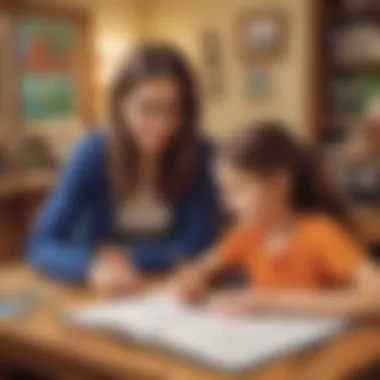

Online collaborative writing tools revolutionize how second graders can work together on writing projects. Platforms such as Google Docs or Padlet allow students to share ideas, edit each other’s work, and provide constructive feedback. This collaborative atmosphere nurtures cooperation and enhances writing through peer support.
Considerations regarding these tools include:
- Accessibility: These tools often require the internet, so familiarity with tech and access are important considerations.
- Guidance Needed: Younger students may need supervision to ensure they navigate these platforms safely and productively.
- Skill Development: Using collaborative tools encourages skills beyond writing, such as teamwork and digital literacy.
In addition, these tools allow teachers to monitor progress and give targeted feedback. Engagement in collaborative writing can enhance not just writing ability but also bolster confidence in young learners, encouraging them to express themselves without fear of judgment.
"Integrating technology in writing instruction not only caters to diverse learning styles but also equips students with essential 21st-century skills."
In summary, integrating technology into writing activities serves to enrich the educational experience. By utilizing writing apps and online collaborative tools, parents and educators can help second graders develop foundational writing skills while fostering creativity and expressions.
Assessing Writing Skills in Second Graders
Assessing the writing skills of second graders is crucial for several reasons. It allows educators and parents to identify strengths and weaknesses, which in turn informs instruction tailored to meet the individual needs of each child. A precise assessment can illuminate a child’s progress and areas that require more attention. Furthermore, understanding a child’s writing abilities helps cultivate their ongoing motivation and enthusiasm for the craft.
Assessment encompasses various methods, including formative and summative assessments. Each has unique characteristics that contribute to the overall evaluation process. Establishing a solid understanding of these assessments aids in building personalized, effective learning strategies.
Both educators and parents can play immense roles in carrying out these assessments. Engaging with children about their writing fosters a supportive environment that encourages growth. The act of discussing what has been written provides children with validated thoughts and insights, making writing a shared, valued experience.
A thoughtful approach to assessment ensures that young writers feel seen and heard in their writing journeys.
Formative vs. Summative Assessments
The distinction between formative and summative assessments is pertinent in evaluating writing skills. Formative assessments are ongoing, occurring during the learning process. They focus on observing and documenting a student’s progress. Examples include teacher observations, peer reviews, and writing conferences. These assessments help guide instruction dynamically, allowing for immediate interventions or support. As such, formative assessments promote a more responsive learning environment.
On the other hand, summative assessments occur at the end of an instructional period. They aim to evaluate what a student has learned overall. Common forms include tests, end-of-term projects, or formal writing assignments. While summative assessments provide a snapshot of a child’s capabilities, they offer less room for immediate instructional response.
In practice, combining both formative and summative assessments yields a more comprehensive understanding of writing development. This approach ensures that a child’s progress is consistently monitored while also assessing their cumulative knowledge.
Using Rubrics for Evaluation
Rubrics provide a structured way to evaluate writing, ensuring clarity and consistency in assessment. A well-designed rubric outlines specific criteria, making it easier for teachers and students to understand expectations. This can include aspects like organization, vocabulary use, sentence structure, and adherence to the writing prompt.
Using rubrics serves multiple purposes:
- Clear Standards: Students know exactly what is expected of them.
- Consistent Evaluation: Rubrics ensure that each piece of writing is assessed uniformly, reducing bias.
- Feedback Opportunities: They allow for more detailed feedback, helping students understand their strengths and areas for development.
- Self-Assessment: Students can use rubrics to self-evaluate their work, promoting a sense of ownership over their writing process.
Encouraging a Love for Writing
Fostering a passion for writing in second graders is essential for their overall development. It is easier for children to learn and express themselves when they enjoy the process. When writing does not feel like a chore, students are more inclined to practice and improve their skills. Creating a positive writing experience can significantly influence children's attitudes toward literacy. They begin to see writing as a valuable tool for communication rather than a task to complete.
Creating a Writing-Friendly Environment
A supporting writing environment plays a critical role in motivating young writers. Parents and educators should consider the physical space, resources, and supports needed for writing. Some important strategies include:
- Designate a Writing Space: Create a specific area for writing that is comfortable and free from distractions. A small desk or corner with good lighting can make a difference.
- Provide Necessary Tools: Make sure that children have access to various writing materials, such as paper, pencils, crayons, and markers. Introducing technology, like tablets with writing apps, can also inspire kids.
- Encourage Collaboration: Allow opportunities for group writing projects. Children can share ideas and learn from peers in a fun environment.
By implementing these strategies, children feel empowered and more engaged in their writing activities. A supportive environment lays the groundwork for developing a lifelong love of writing.
Celebrating Writing Achievements
Recognizing and celebrating children’s writing accomplishments is crucial. It reinforces their efforts and builds their confidence. Celebrations can take many forms. Parents and teachers can consider these approaches:
- Showcase Finished Work: Display students' writings on bulletin boards or walls. This not only encourages pride but also allows for peer recognition.
- Host Writing Parties: Periodic events where children can share their stories with classmates or family members create a sense of importance around their work.
- Provide Positive Feedback: Specific compliments about their writing contribute to their growth. Mentioning elements of their work that are strong boosts self-esteem.
Celebrating achievements in writing encourages students to take pride in their work, fostering a continuous desire to create and improve.
Encouraging a love for writing is a multifaceted approach. A positive environment paired with acknowledgment of achievements can significantly impact the writing journey for second graders. This foundation influences their literacy skills and overall academic success.
Closure: The Role of Writing in Academic Success
Writing plays a crucial role in a child’s academic journey, particularly for second graders. At this stage, children develop key skills that serve as the foundation for future learning. Engaging in writing activities enhances their understanding of language, structure, and communication.
First, becoming proficient in writing supports cognitive development. As children write, they learn to organize their thoughts. This organization is essential for overall learning. The process of writing down ideas helps them make sense of what they know, which can lead to improved comprehension across subjects.
Moreover, writing encourages creativity. When children are given the opportunity to express themselves through writing, they explore their imagination. This economic unleashes new ideas and enhances their ability to communicate complex thoughts.
"Writing is not just a skill; it's a reflection of a child's thinking process and creativity."
Additionally, writing helps in refining critical thinking abilities. For instance, when faced with narrative writing prompts, children must analyze characters and plot points. They construct narratives logically while making decisions about their writing. This skill transfers to other academic areas where analysis and structured reasoning are necessary.
Benefits of strong writing skills include:
- Enhanced communication abilities.
- Increased motivation and engagement in learning.
- A greater capacity for critical analysis.
Educators must recognize writing as a tool for academic success. Integrating diverse writing activities into the classroom can significantly boost students' writing skills. Activities ranging from creative storytelling to informative writing tasks expose children to various forms of expression.
Finally, fostering a love for writing not only benefits academic performance but also promotes lifelong learning. When children enjoy the process of writing, they are more likely to seek opportunities to improve their skills outside of the classroom. This enthusiasm can carry into their future education.
In summary, writing is integral to second graders' academic success. It develops essential skills, fosters creativity, and enhances critical thinking, creating a strong foundation for the future.











